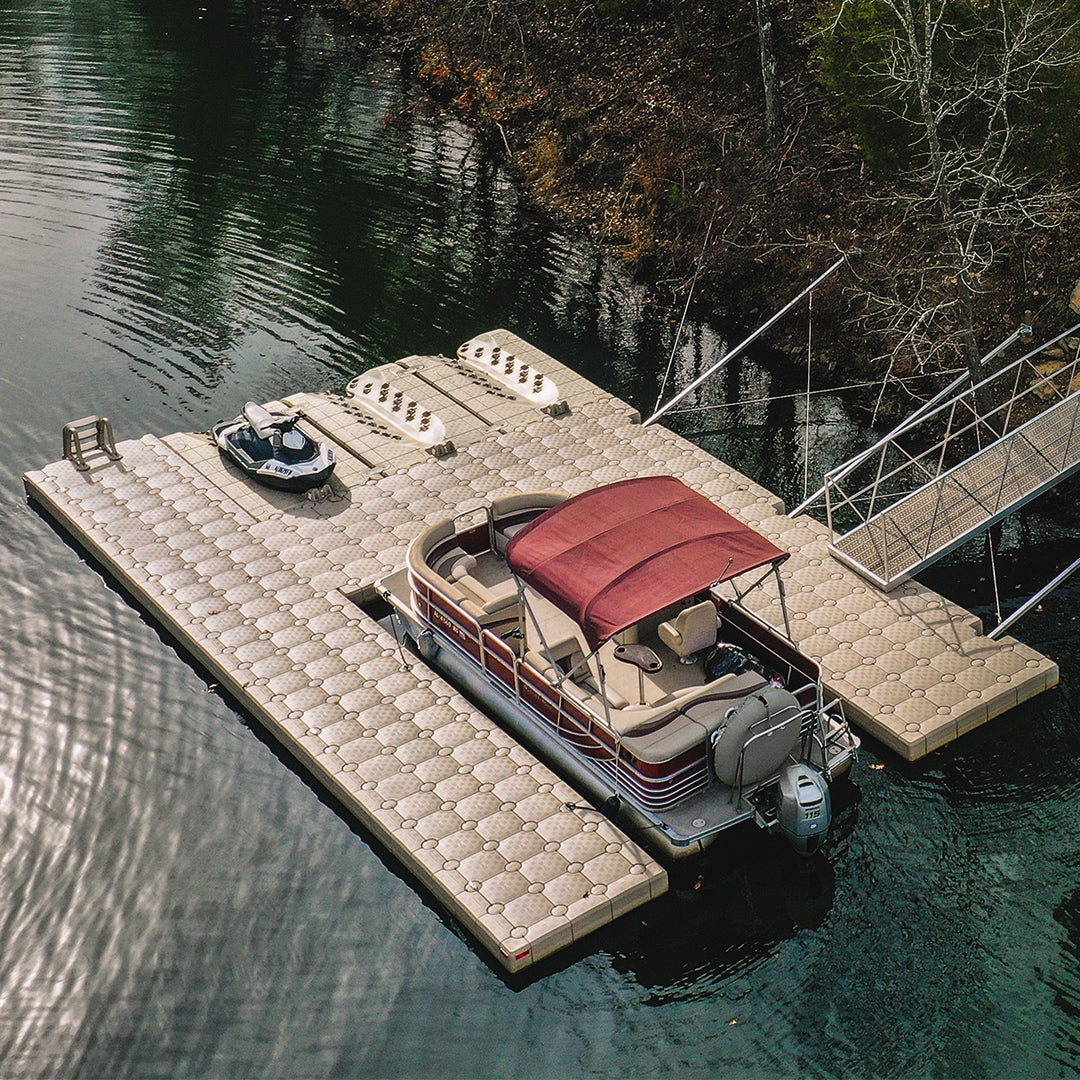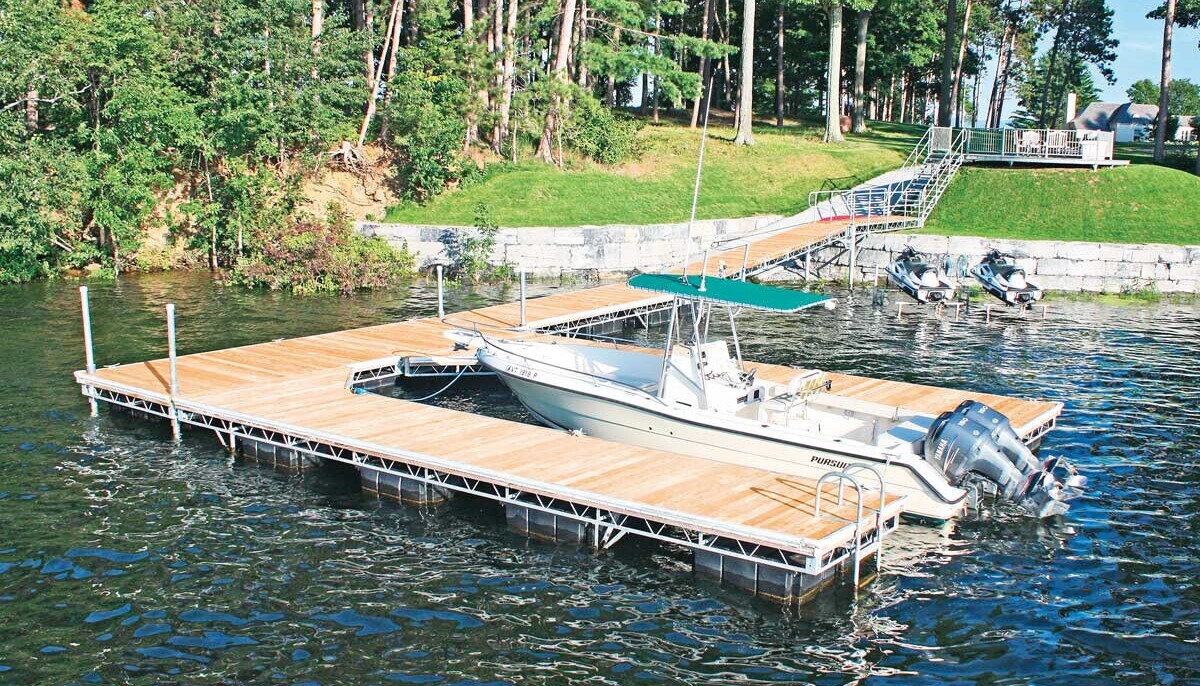Upgrade Your Waterside With Resilient Floating Docks
Upgrading your waterfront with long lasting floating docks can significantly boost both functionality and aesthetics, giving a flexible option for numerous water activities. With a range of products available, consisting of low-maintenance choices and conventional wood, selecting the appropriate dock can match your individual design and fulfill useful demands.
Benefits of Floating Docks
Floating docks offer a plethora of advantages that improve their allure for different maritime applications. Among the primary benefits is their versatility to changing water levels - floating docks. Unlike traditional fixed docks, floating docks rise and autumn with the trend, making certain consistent access for boats and watercraft regardless of ecological problems. This function substantially lowers the danger of damage to vessels, as they continue to be firmly moored also during changes in water depth.
Additionally, floating docks are much easier to transfer and mount, providing versatility for seasonal or short-lived usage. Their modular style enables modification to fit certain demands, whether for private marinas, property waterfronts, or commercial applications.
Moreover, floating docks create very little disruption to the marine environment, preserving local ecosystems and reducing the probability of disintegration. They additionally provide enhanced safety and security and security for users, as their resilient nature uses a much more forgiving surface than rigid structures.
Moreover, floating docks can help with a varied variety of tasks, such as fishing, swimming, and recreational boating, making them a beneficial asset for waterfront development. Their versatility and usefulness make floating docks a preferred choice for a range of maritime jobs.
Selecting the Right Products
Choosing suitable materials for floating docks is vital to their durability, efficiency, and total efficiency. When choosing products, take into consideration variables such as ecological direct exposure, maintenance requirements, and structural honesty. Usual materials consist of timber, plastic, aluminum, and composite choices, each offering unique benefits and downsides.
Timber, while aesthetically pleasing, calls for regular upkeep to stop rot and decay. Pressure-treated wood can improve resilience, yet it may still give in to water damages gradually. Plastic drifts, usually made from high-density polyethylene, are resistant to rust and require marginal upkeep, making them an eye-catching option for low-maintenance applications.
Light weight aluminum is an additional feasible option, known for its strength and light-weight residential properties. It is immune to rust and can stand up to rough weather, although it may be more pricey than other products. Composite materials integrate the finest attributes of timber and plastic, using a resistant and low-maintenance option that resembles the appearance of wood without the connected drawbacks.
Ultimately, the selection of material ought to straighten with the meant usage, environmental factors to consider, and budget restrictions, making sure a long lasting and practical floating dock that fulfills your particular requirements.
Setup Refine Summary
The effective installment of a floating dock depends on cautious preparation and implementation, guaranteeing that it operates efficiently in its desired setting. The primary step entails assessing website conditions, consisting of water deepness, coastline features, and dominating weather patterns, which will certainly notify the dock design and anchoring system.
Adhering to the site analysis, the next phase is to prepare the floating dock components. This consists of putting together the frame, safeguarding drifts, and connecting any kind of required equipment. It is important to ensure that all connections Recommended Site are durable and water-resistant to withstand aquatic problems.
When the dock is put together, the installment process begins with placing the dock in the water. This can include a crane or other training tools, especially for larger frameworks. Correct positioning is essential for functionality and security.

Upkeep Tips for Long Life
Normal maintenance is essential for guaranteeing the longevity and optimal efficiency of a drifting dock. To achieve this, start with routine examinations at least twice a year, concentrating on the honesty of the dock's structure, consisting of the flotation protection tools and connecting equipment. Seek indications of rust, damages, or wear, and address any concerns quickly to protect against additional deterioration.
Cleaning up is an additional critical aspect of maintenance. Eliminate debris, algae, and barnacles from the dock's surface area to prevent unsafe conditions and keep visual charm. Utilize a moderate detergent and best site a soft brush to stay clear of damaging the dock's materials.
In addition, guarantee that the dock is effectively anchored and protected to withstand seasonal adjustments in water levels and weather. Inspect the anchoring system for stability and make modifications as necessary.
Enhancing Your Outdoor Visual
To produce a visually enticing exterior space, including a drifting dock can dramatically improve the general visual of your beachfront residential property. Floating docks are not just practical but can also work as a striking prime focus that matches the natural environments - floating docks. Offered in different products and styles, these docks can be customized to match your residential property's building style and landscape
The addition of decorative elements, such as integrated lighting or stylish barriers, better elevates the dock's visual appeal. Think about using all-natural wood surfaces, which mix flawlessly with the environment, or going with modern products like light weight aluminum or composite decking that use a smooth, modern appearance.
Tactically positioning planters or seating areas on or around the dock can produce welcoming spaces that encourage leisure and enjoyment of beachfront sights. Furthermore, including colors and textures that integrate with your landscape will certainly develop a natural aesthetic throughout your exterior location.

Verdict

Updating your waterfront with resilient floating docks can substantially boost both performance and visual appeals, supplying a versatile solution for numerous water activities. Unlike conventional set docks, floating docks rise and loss with the trend, ensuring regular ease of access for boats and watercraft regardless of environmental problems.Choosing proper products for floating docks is crucial to their longevity, performance, and total performance.Once the dock is set up, the installment process commences with placing the dock in the water.In recap, floating redirected here docks offer countless advantages, including versatility to water level changes and a selection of material alternatives.